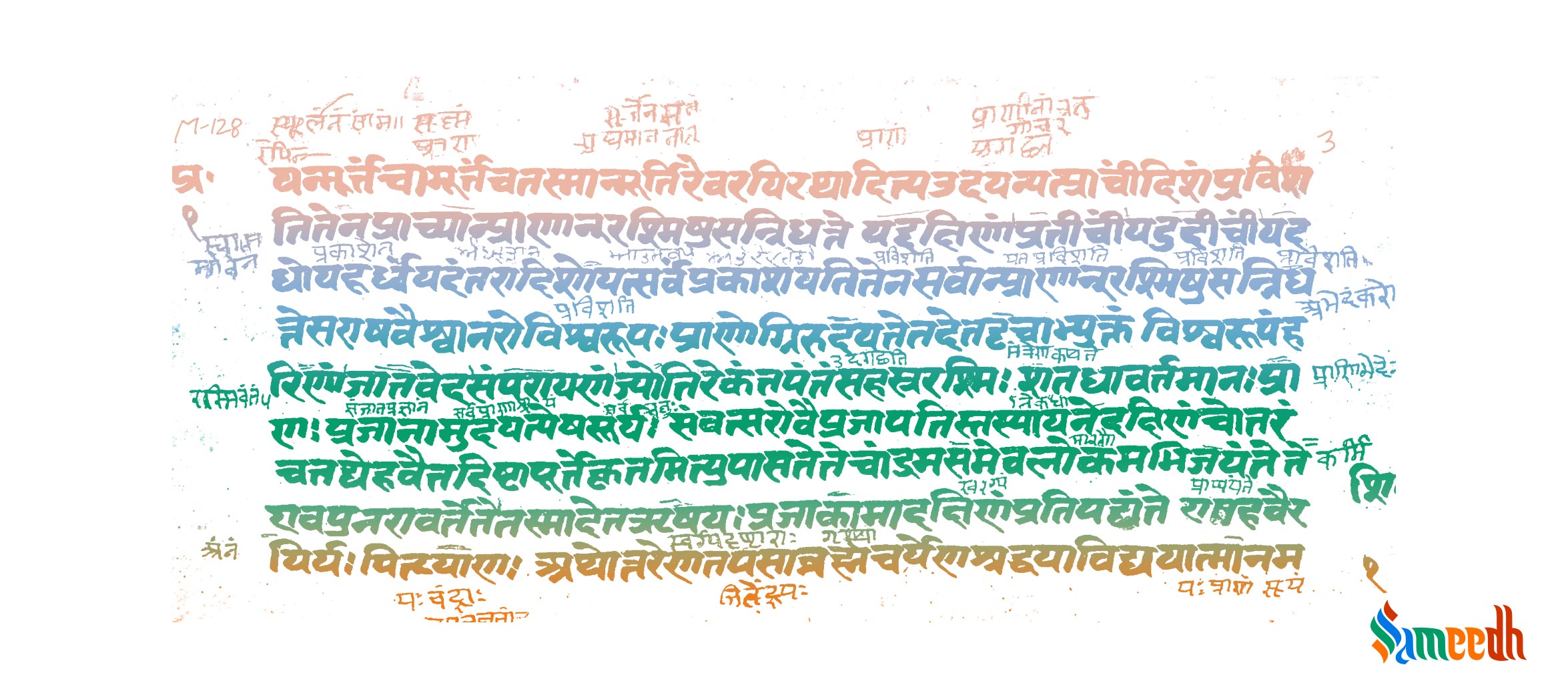The Prasna Upanishad provides answers to the most basic and obvious questions that a student of Vedic literature would ask. It is the handbook for seekers of the universal truth.

Prashna Upanishad manuscript in Sanskrit; Image Source: Ms Sarah Welch
What is Upanishad?
Upanishad is the scriptures that connect the knowledge given in the four Ved to common people’s lives and traditions. They are called Upanishad (sitting down closely) because Upa means ‘near’ and Shad means ‘to sit’. Many of the Upanishads are written in the style of a conversation between a Guru and a Shishya sitting near the feet of the teacher. Upanishads are aimed at bringing knowledge, prosperity, and enlightenment to the common people’s lives. Every Upanishad is focused on the knowledge covered in one particular Ved from Rigved, Samaved, Shukla Yajurved, Krishna Yajurved, and Atharvaved.
The legacy of Prasna Upanishad
Prasna literally means ‘Question’. As is the case for the other Upanishad, the Prasna Upanishad is also an anthology, and its precise timeline is difficult to ascertain. It is believed to be created between the 4th to 6th century BCE. It is associated with the teachings of Atharvaved. It has the similar connotations to Mundak Upanishad and Mandukya Upanishad, which are based on Atharvaved as well. Numerous Vedic scholars have published their commentaries on the Prasna Upanishad – including Adi Shankaracharya and Madhavacharya.
The structure of Prasna Upanishad
Prasna Upanishad is divided into 6 chapters (Kandika), and each chapter pertains to one principal question and its answer. There are multiple sub-questions in each chapter as well. In total, it has 67 shlok across the 6 chapters. Most of the shlok are written in the prose format, with some exceptions – which are written in the verse format. The Prasna Upanishad has been created in the form of Q & A between Pippalad Muni and his six students. These six students are – Kabandhin, Bhargav, Kaushalya, Gargya, Satyakam, and Sukeshan.
The six questions pertain to…
Chapter 1 – Spiritual paths of Sun & Moon
Chapter 2 – Discussion on the Dev clan
Chapter 3 – The origin & nature of Prana
Chapter 4 – Different mental states & bliss
Chapter 5 – Ways of meditation using AUM
Chapter 6 – Purush of sixteen manifestations
The Knowledge of Prasna Upanishad
Prasna Upanishad explains the true nature of the universe through the Vedant philosophy. It begins with 2 peace invocation mantra, one of which is the famous Swastik Mantra – that is recited while applying the tilak or at the beginning of any auspicious work.
Prasna Upanishad provides answers to these six questions…
Question 1: What is the origin/ source of all kinds of life forms or living beings?
Question 2: Which are the prevailing forces in the universe? Which one is superior?
Question 3: How life comes to the body, sustains there, and finally leaves it?
Question 4: While we are sleeping, what is that which is awake and dreams?
Question 5: What is the significance of doing meditation by chanting AUM?
Question 6: What are the 16 manifestations of the self or a cosmic person?
All these questions are carefully arranged to maintain logic & relevance. The answer to these questions is precisely crafted in poetic form, and at the end of the answer, the reader is also notified to avoid any confusion.